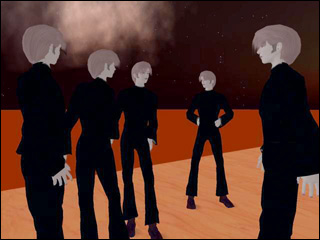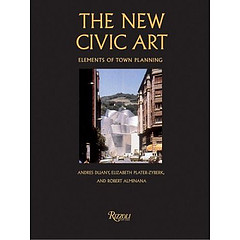
Last week I was at the Austin Game Conference, and, other than my own presentation, pretty much missed everything. Some have asked for my slides from the talk, so here they are. There are many notes and anecdotes missing, but you should be able to glean something from it.
I may not have attended many of the talks, but I did have spies. Other UTD Virtual Worlds Lab folks were there and they gave me reports on many of the panels. One interesting thread was the “metaverse” talk which I’ve been tracking for some time now. Much of it, granted, is already starting to sound hype-filled, but there are important ideas to discuss. There are competing visions about how the metaverse will evolve (if at all).
One idea that I think deserves to be deflated is that, by some magic transformation, the game industry itself will create an extensible 3D universe that moves beyond games and connects a diverse set of 3D worlds. I have doubts that, in any conscious manner, that this will be the case. The game developers have enough problems creating new games that will compete in a very tight marketplace. And, with a few exceptions, they get pretty uncomfortable once the talk begins to move beyond games. The talk about casual games, serious games, and the ill-defined metaverse were efforts to expand the space but stay with in their comfort zone.
My bet is that the extensible, user generated 3D worlds that move beyond games will come from outside the game industry and more importantly, they will eventually eclipse it.
In several sessions the WOW vs MySpace stat came up: 1 million US WOW players vs 110+ million MySpace users. One of the points that Monica Evans and I were trying to make is that MMORPG games need to take much more seriously the social aspects. Monica, who is a PhD candidate at UT Dallas, argued that the social space that exists within and around the game is actually the most important aspect. I argued, among other things, that game developers need to take look at the web 2.0 social network space for ideas about how to create tools for community building. They are very different ways of producing, however. Games are top down productions where all the content is created by the game company. Social Networks are made up of a set of tools that enable participants to create their own content. One designs the experience and the other designs the tools that allow people to create their own experiences. In the 3D space, Second Life is the best know example of this.
Once you leave the confines of game worlds and game related interactions the conventions for new forms of navigating and communicating are non-existent. In game worlds you can model whatever world you are emulating: fantasy, sci-fi, etc. When you move in to 3D spaces for other purposes - an “art gallery” or “office space” for example - basically the only option is to fall back on real world examples. And that’s where not only the whole thing falls on its face, but also where the opportunity lies.
The opportunity is to create new kinds of worlds that vary from imaginative creations beyond the narrow game genres to very practical spaces that extend and even create new areas of the economy.
The problem is that no one seems to be leading the charge. Some new, consumer oriented tools would help. What we have now are game development tools, Second Life and a few other similar worlds, and Multiverse. These are developer and early adopter tools. My second bet, as I presented in my talk, is that the “multiverse” will develop out of lots and lots of small, individually created and interconnected social worlds, rather than from the expansion and connecting of larger, game-like worlds.
What we don’t have yet are simple tools that allow individuals and groups to create these stand alone worlds. For lack of a better name I call it “iWorld” in reference to the Apple suite of software that is so easy to use. That is the way it needs to work. What iMovie is to Final Cut, iWorld would be to the current crop of developer tools (even though they are a far cry from the maturity and elegance of Final Cut Pro). I should be able to create a virtual room, put stuff in it, and invite friends over. Then I should be able to connect it to other rooms and larger spaces.
Games take social interaction as a secondary consideration. And you really can’t blame them: creating a good game is very hard. But they just need to talk to their own, most ardent fans to find out just what’s missing. That’s just what I did several months ago in Atlanta at the FanFaire for Sony’s Everquest and other properties. What I learned is that without exception among the thirty or so interviews and discussions I had, that the social connection was more important than the game. The players loved the game, but they really needed the connection to other people. This need is the very serious part of game worlds, and game companies are not well equipped to deal with it. It’s not their area of expertise.
I came away from the FanFaire event a bit sad. I met several people who had driven alone from hundreds of miles away to meet fellow gamers. The longing for friendship and connection in the real world was palpable. In this context, among like-minded peers, they were comfortable, and it felt like an instant community was formed during those three days. After it was over they went back to using Everquest as a social network, even though it is not intended or optimized for this purpose. The sadness left me thinking that these people need something better. And what about the much, much larger group that is not interested in the fantasy and sci-fi worlds the game industry offers? I think they also need 3d social worlds. Where are they? Second Life is a start, but it has serious flaws that will keep it from becoming the model for the metaverse (economic model, a single map, private ownership & governance, a dedication to emulating reality, etc.) More on this later.
I think it is highly unlikely that the metaverse will emerge from the gaming world. An expanded 3D world will more likely emerge from Internet developers who look look to games for inspiration in the areas of real time interaction and immersive 3D space. There are interim steps to be made, however. I’ll leave that to your imagination…
 I will be giving a talk on the emerging metaverse, art, and related topics this Saturday afternoon at the Modern Art Museum of Fort Worth. I’ll be previewing the upcoming art show on the ATEC Second Life Island. The talk is part of the TexElectronica New Media Art event hosted by UNT. Tom Linehan and Frank Dufour from UTD are also scheduled at the event.
I will be giving a talk on the emerging metaverse, art, and related topics this Saturday afternoon at the Modern Art Museum of Fort Worth. I’ll be previewing the upcoming art show on the ATEC Second Life Island. The talk is part of the TexElectronica New Media Art event hosted by UNT. Tom Linehan and Frank Dufour from UTD are also scheduled at the event.
